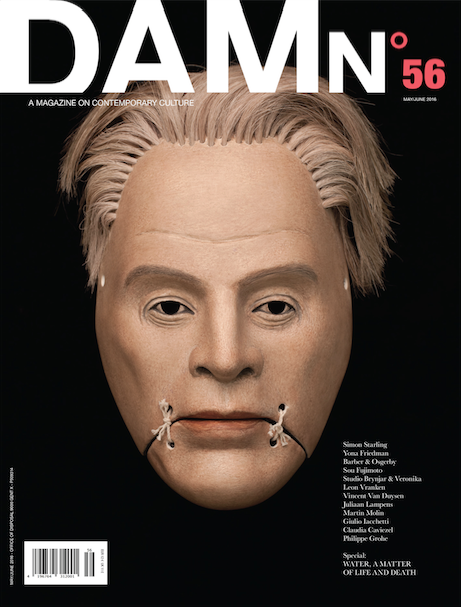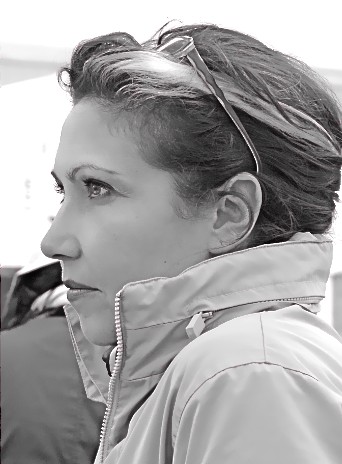Along with their eponymous studio, Barber and Osgerby founded Universal Design Studio in 2001, now recognised as one of the world’s most innovative creative design consultancies working in architecture, interiors, and exhibition design. In 2012, the pair followed this with the launch of Map, a strategy-based industrial design studio that draws on the creative and commercial skills of Barber & Osgerby to provide ambitious clients with design in- sight, creative direction, and research.
REJIGGING So from their straightforward status as designers, the two men have essentially reshaped the profession, broadening its boundaries. And simply put, that was for reasons of liquidity. “If you look at the participants in a design fair, you see the old system whereby someone does the industrial production and you get paid royalties. That’s how it worked up until 20 years ago because there were fewer designers and you could therefore make a living like that. But those days are over; new areas have opened up. People have decided to either make their own products, or slide into other territories, like designing for galleries. At one time, there were artists and designers; now somehow we are back to the period of the cabinet-maker, where you can commission a product because you like the way it will be made.”
On the other end of the spectrum, there is consultancy work. “With Map, we work alongside small or huge multinationals and instead of creating objects, we sell our thinking skills – helping these companies achieve different visions as well as levels of development. We use our brains instead of our hands. Unfortunately, a lot of the thinking we have done needs to remain confidential, so this does not appear on our website.”
A crucial moment was in 2010, with the creation of an experimental installation for Sony at the Fuorisalone in Milan. Through a series of conceptual objects that exploited Sony’s new sound technologies, a perspective was presented on how electronics could be better integrated into contemporary home interiors. “The moment we realised that we were shifting into a different area was during that Sony installation in Zona Tortona. It comprised a sound studio with eight experiments looking at different ways in which sound could be used in a home. A really fantastic project. We worked with Japanese engineers and with technologies that you cannot find on the market. For example, an incredible, high quality speaker that only works when it’s close to your ears, from a metre away you can hear absolutely nothing.”
THIS AND THAT AND THIS So much is based on the ‘campus approach’ pursued by Barber and Osgerby in their headquarters, enhancing a daily attitude that actually makes it possible for different disciplines to interact, from digital to cultural to scientific. “We call our process ‘informed creativity’. In the studio, we need to cover all the various areas, so we have graphic designers, style makers, software writers, and experts like acousticians and lighting specialists. The way we see it, it is like an atelier, a college environment where you have lots of different projects and different types of researcher all going on at the same time, and you can learn a lot every day just in passing by the desks.”
“Right now we are making a movie for a Japanese company, a completely new piece of thinking. We’re very proud of it: it’s an idea, a series of models that we have developed. We are moving into different areas all the time.” Take science, for example, a discipline the duo approached thanks to commissions received by the Science Museum in London. “We did the permanent gallery and the temporary exhibitions as well. And the great thing about exhibitions is that you learn so much about a specific topic because you have to understand the subject in depth in order to make an experience of it for visitors. We are working on a show about the amazing new material graphene, which involves trying to explain to people in which way this material will be revolutionary in our lives. And in the meantime, we are creating a new chair for Vitra. So we’ve got very practical things going on in the studio, too.”
REJIGGING So from their straightforward status as designers, the two men have essentially reshaped the profession, broadening its boundaries. And simply put, that was for reasons of liquidity. “If you look at the participants in a design fair, you see the old system whereby someone does the industrial production and you get paid royalties. That’s how it worked up until 20 years ago because there were fewer designers and you could therefore make a living like that. But those days are over; new areas have opened up. People have decided to either make their own products, or slide into other territories, like designing for galleries. At one time, there were artists and designers; now somehow we are back to the period of the cabinet-maker, where you can commission a product because you like the way it will be made.”
On the other end of the spectrum, there is consultancy work. “With Map, we work alongside small or huge multinationals and instead of creating objects, we sell our thinking skills – helping these companies achieve different visions as well as levels of development. We use our brains instead of our hands. Unfortunately, a lot of the thinking we have done needs to remain confidential, so this does not appear on our website.”
A crucial moment was in 2010, with the creation of an experimental installation for Sony at the Fuorisalone in Milan. Through a series of conceptual objects that exploited Sony’s new sound technologies, a perspective was presented on how electronics could be better integrated into contemporary home interiors. “The moment we realised that we were shifting into a different area was during that Sony installation in Zona Tortona. It comprised a sound studio with eight experiments looking at different ways in which sound could be used in a home. A really fantastic project. We worked with Japanese engineers and with technologies that you cannot find on the market. For example, an incredible, high quality speaker that only works when it’s close to your ears, from a metre away you can hear absolutely nothing.”
THIS AND THAT AND THIS So much is based on the ‘campus approach’ pursued by Barber and Osgerby in their headquarters, enhancing a daily attitude that actually makes it possible for different disciplines to interact, from digital to cultural to scientific. “We call our process ‘informed creativity’. In the studio, we need to cover all the various areas, so we have graphic designers, style makers, software writers, and experts like acousticians and lighting specialists. The way we see it, it is like an atelier, a college environment where you have lots of different projects and different types of researcher all going on at the same time, and you can learn a lot every day just in passing by the desks.”
“Right now we are making a movie for a Japanese company, a completely new piece of thinking. We’re very proud of it: it’s an idea, a series of models that we have developed. We are moving into different areas all the time.” Take science, for example, a discipline the duo approached thanks to commissions received by the Science Museum in London. “We did the permanent gallery and the temporary exhibitions as well. And the great thing about exhibitions is that you learn so much about a specific topic because you have to understand the subject in depth in order to make an experience of it for visitors. We are working on a show about the amazing new material graphene, which involves trying to explain to people in which way this material will be revolutionary in our lives. And in the meantime, we are creating a new chair for Vitra. So we’ve got very practical things going on in the studio, too.”
 This article appeared in DAMN°56. Order your personal copy.
This article appeared in DAMN°56. Order your personal copy.

